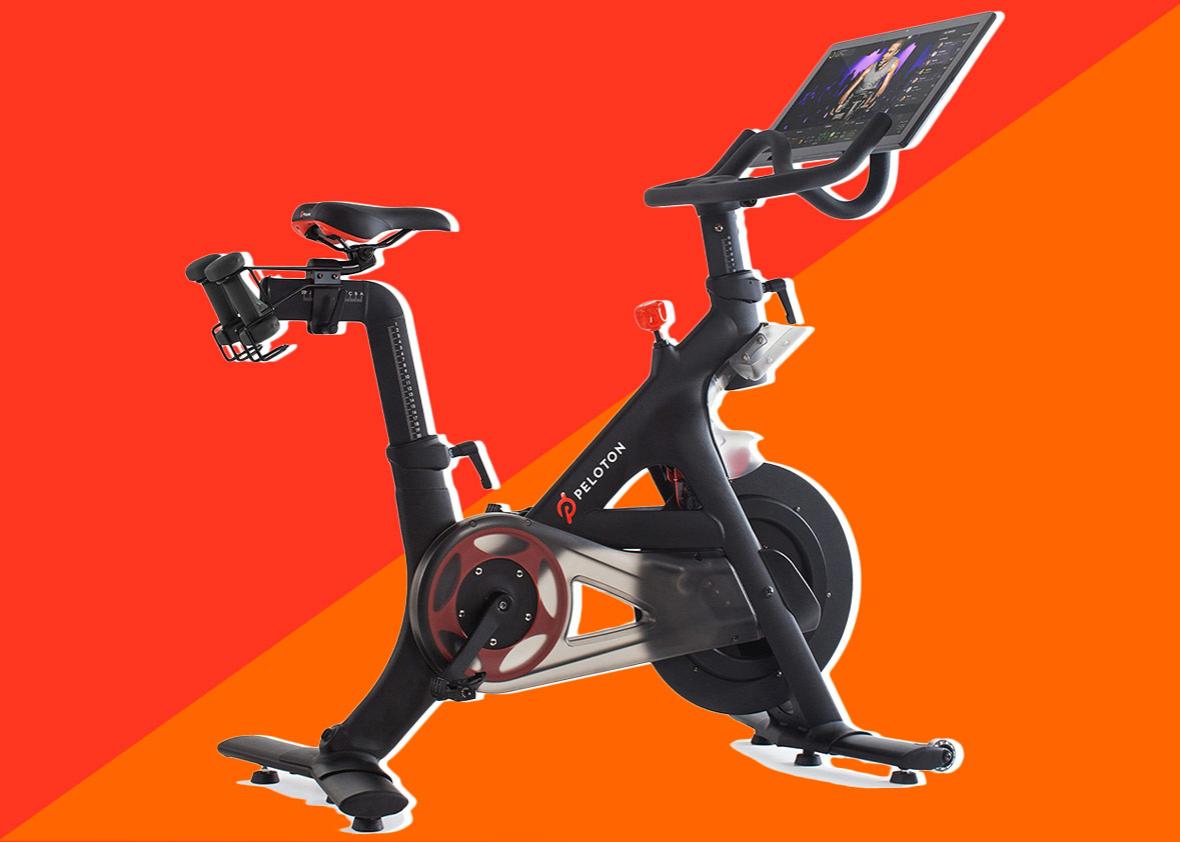For a recreational athlete who thrives outdoors, indoor workouts can be a chore. And for a spin enthusiast who loves the energy of a class environment, solo workouts can feel isolating. But when the weather turns icy and foul, an indoor, at-home workout may be the only option at your disposal. Luckily for those who prefer to get their fitness kicks by pedaling, a few new products and technologies are taking the pain out of indoor cycling. Thanks to our ubiquitous, high-speed internet connections, streaming video, and hardware improvements in indoor bike equipment, indoor cycling doesn’t suck anymore—it’s actually fun.
In recent years, the stationary bike has gotten a facelift, with high-end exercise bikes like Peloton and Flywheel bridging the gap between at-home workouts and energetic spin classes. Peloton, in particular, has enjoyed a cultlike status. Since selling its first bikes in 2014, the company has grown 200 percent each year. For about $2,000, you get a stationary, spin-style bike with customizable positioning and resistance levels. On the large touch-screen display affixed to the end of the handlebars, you can select and view different on-demand and live-streaming cycling classes. (Access to Peloton’s classes costs $39 per month.) As you pedal, stats such as your pedaling cadence, calories burned, and power output update along the bottom of the screen. For many of these indoor bike owners, the flexibility of being able to work out whenever their schedules permit is a boon, but it’s the number and variety of classes and instructors—including 14 live classes daily and more than 4,000 classes in its catalog—that draw riders in and keep them riding indoors day after day.
As a cyclist who primarily rides outdoors, I’ve gravitated toward another indoor cycling trend: the $15 per month app Zwift. It gamifies indoor cycling using stats provided by a connected trainer to influence the behavior of your on-screen avatar, which rides through the fictional cycling mecca of Watopia—or virtual renditions of real-life professional road racing circuits in places like Richmond, Virginia, and London. Besides a screen (a TV, computer, tablet, or smartphone), the trainer is the only hardware you need for Zwift beyond your own road bike. Trainers, which cost anywhere from $100 to upward of $2,000, hold your bike steady while applying resistance to your rear wheel, so you can pedal and shift normally without rolling into a wall. Newer and higher-end models emulate real-world cycling in a variety of ways, including adding resistance to simulate going uphill (based on route or training plan input from an app like Zwift) and even allowing your bike to rock gently side-to-side as you pedal.
Zwift, which launched in late 2014, has quickly amassed a following: The app’s 550,000 riders hail from 195 countries and have ridden a combined 125 million miles on the virtual platform. But while it’s on-screen environment is visually engaging and filled with scenic, high-quality graphics, that’s not the only thing that makes it such a great way to pass time indoors—it’s the app’s social connection with other riders around the globe.
“What makes Zwift different from just a trainer ride is the psychology of having other real cyclists around you in a virtual world,” said Alison Kubota, a former teammate and Zwift rider based in the San Francisco Bay Area. “That seems to get me really motivated to push harder and ride longer.” While she prefers riding outdoors, Zwift helped her fit in workouts while balancing the rigors of a full-time job. In addition to the app’s group rides, Kubota has also participated in Zwift’s virtual races and in Zwift Academy, a competitive six-week training program that rewards one lucky, talented rider with a professional contract at the end.
While Zwift offers a virtual environment for riding, other companies have gone one step further: building virtual reality experiences for indoor cyclists. With VirZoom, for example, you can ride either its stationary bike or a Life Fitness Lifecycle bike with a VR headset and pedal through a true virtual reality game. While Zwift and Peloton have a focus on fitness and competition, VirZoom aims to help you exercise without realizing it. The platform has a number of game options, from piloting an army-style helicopter and dodging missiles, to riding a winged Pegasus through the skies, to virtually driving a race car. Reviewer Zara Stone found the experience incredibly immersive, and the hardware (the VZ Bike Controller) responsive, so she barely noticed she’d pedaled her way to a sweat. The straightforward $350 indoor bike includes eight levels of pedaling resistance and 10 buttons on its handlebars for controlling in-game action—however, you’ll need to supply your own VR headset.
A few years back, I’d always opt for riding in the rain or the dark rather than trying to do a workout indoors. Even with music playing, or the TV on in front of me, it was mind-numbingly boring. While other products have made night-riding more enjoyable, indoor workouts are no longer dreadful—or dreaded. Virtual and on-screen environments, as well as gamification, have made indoor riding a fun and not-so-solo experience, and it’s great news whether you’re looking to shed some pounds or just stay fit through the winter.
